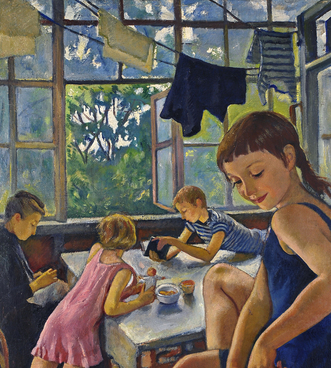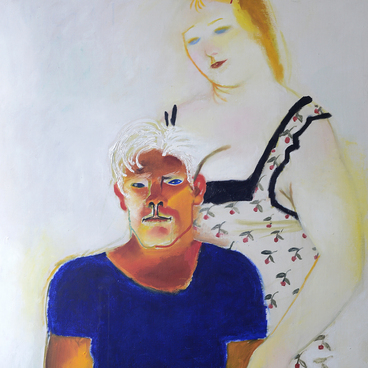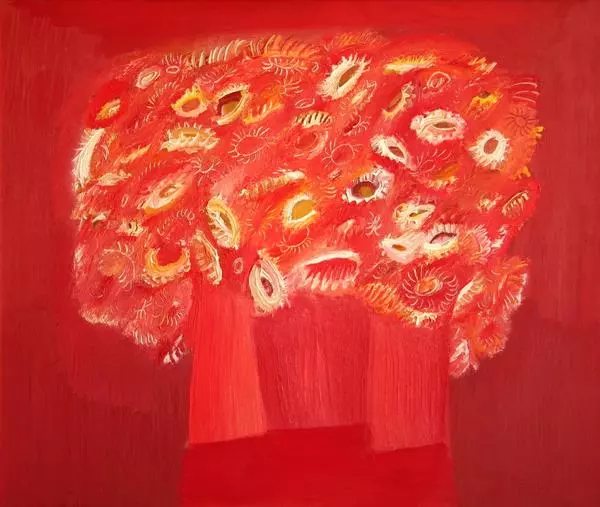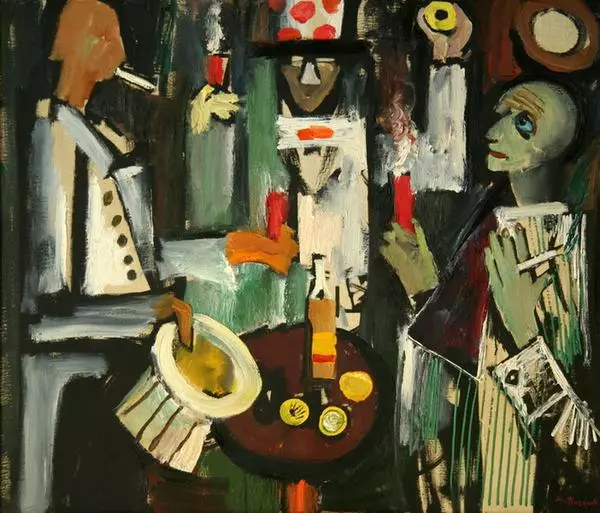AndrEy PozdEev (1926–1988) is considered to be the Siberian MatIsse. He was one of the most famous and outstanding figures in the KrasnoyArsk art scene. Today, his name has become synonymous with the renewal of artistic language and aspiration for inner freedom despite all obstacles the artist faced in his life. Pozdeyev’s works did not conform to the canons of Soviet-era artworks and ideals of social realism. For a long time, his paintings remained out of the public eye. The artist was not allowed to exhibit his works and was considered politically unreliable, though he was never a dissident.
The painting exhibited in the Novosibirsk State Art Museum took in the features most important to Pozdeyev. Right at first sight, it becomes obvious that “Self-portrait in a yellow shirt” is marked by sincerity and openness. Pozdeyev was not afraid to demonstrate his own individual artistic worldview. Therefore, free expression was a fundamental principle of his work, which, of course, ran counter to the official idea of painting as a collective statement.
In the picture, we see blazing colors, extremely zestful brush strokes, and the expressiveness of feelings. The artist internalized these traits by turning to the avant-garde tradition and works of contemporary Western European artists. During the thaw period, at the turn of the 1960s, all these works became available for inspection and gave rise to some kind of cultural revolution.
“Self-portrait in a yellow shirt” was painted in 1973. It became the most vivid expression of the master’s particular obsession with creativity and search for new artistic solutions—echoing his time, daring, and vivid. The composition is based on crooked, deliberately harsh lines, and explosive coloration. The artist deftly holds a paintbrush in his big hardened hands—these are the hands of a worker, not a soft aesthete. The color palette glares with orange; reds, pinks, and blues swirl in the background. The painting gives off the artist’s sincerity, his independence, and spiritual openness to all things new.
The painting exhibited in the Novosibirsk State Art Museum took in the features most important to Pozdeyev. Right at first sight, it becomes obvious that “Self-portrait in a yellow shirt” is marked by sincerity and openness. Pozdeyev was not afraid to demonstrate his own individual artistic worldview. Therefore, free expression was a fundamental principle of his work, which, of course, ran counter to the official idea of painting as a collective statement.
In the picture, we see blazing colors, extremely zestful brush strokes, and the expressiveness of feelings. The artist internalized these traits by turning to the avant-garde tradition and works of contemporary Western European artists. During the thaw period, at the turn of the 1960s, all these works became available for inspection and gave rise to some kind of cultural revolution.
“Self-portrait in a yellow shirt” was painted in 1973. It became the most vivid expression of the master’s particular obsession with creativity and search for new artistic solutions—echoing his time, daring, and vivid. The composition is based on crooked, deliberately harsh lines, and explosive coloration. The artist deftly holds a paintbrush in his big hardened hands—these are the hands of a worker, not a soft aesthete. The color palette glares with orange; reds, pinks, and blues swirl in the background. The painting gives off the artist’s sincerity, his independence, and spiritual openness to all things new.





